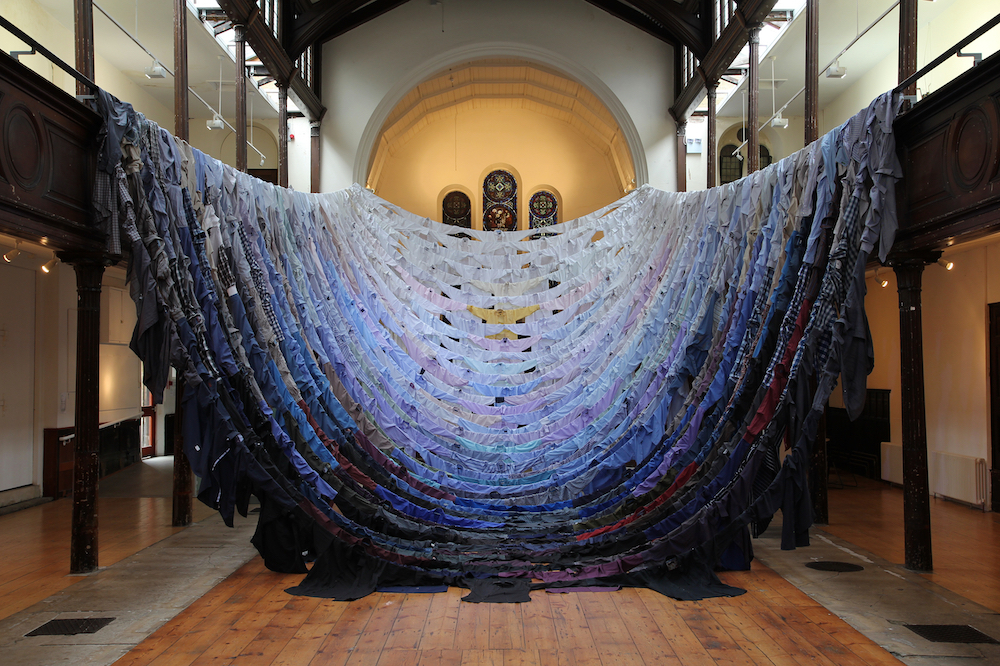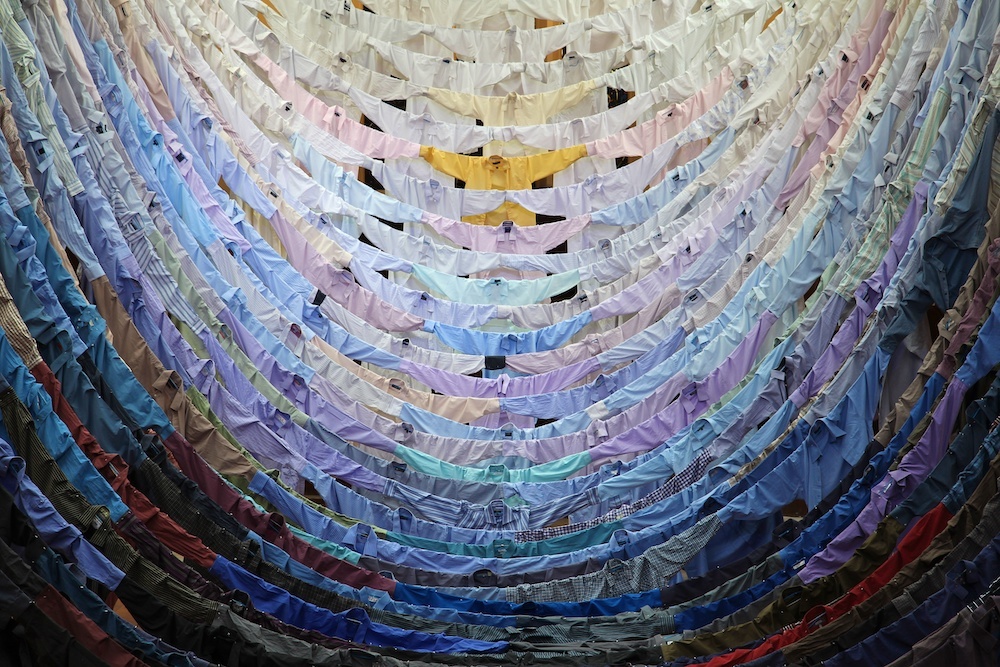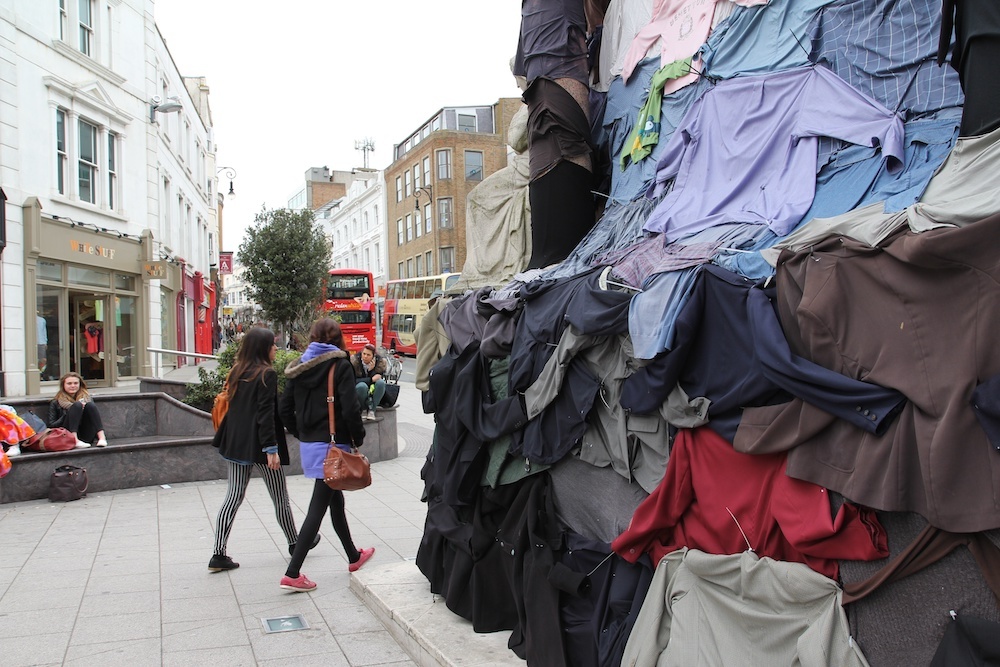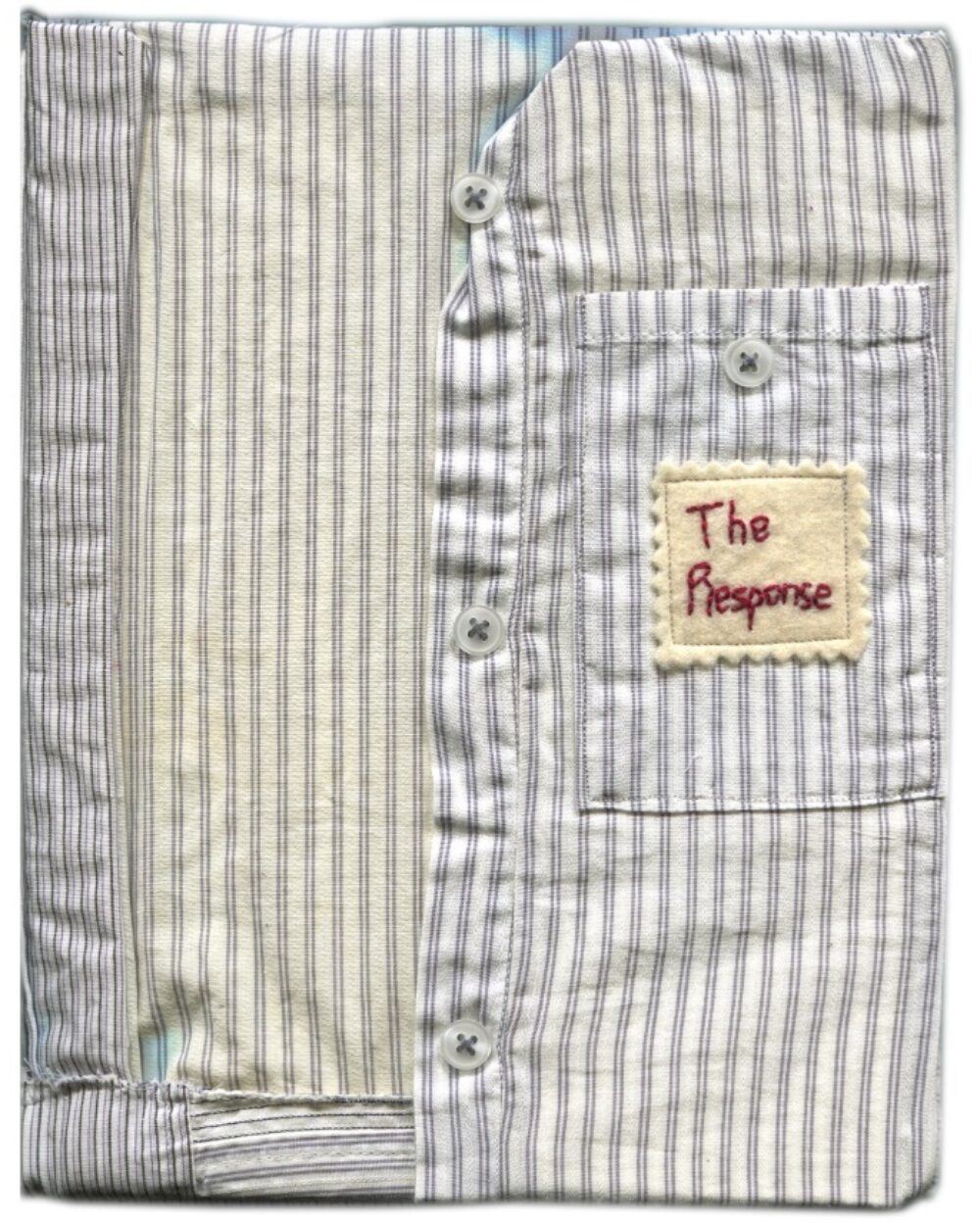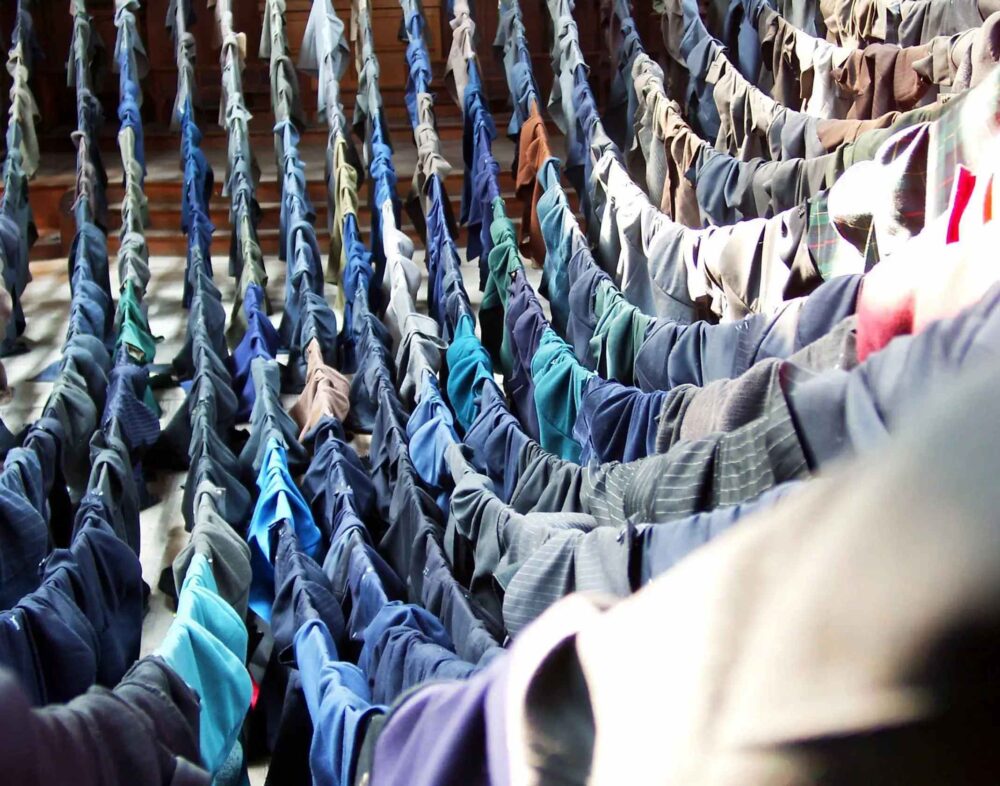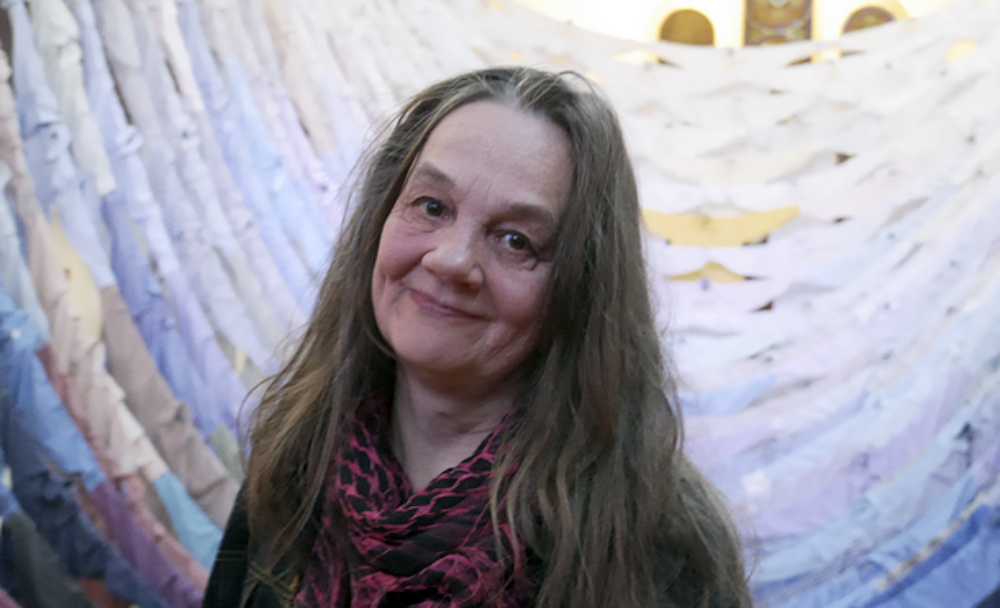The Blue Route
Kaarina Kaikkonen
Archive
Exhibitions
(6 April to 27 May 2013)
Fabrica worked with leading Finnish artist Kaarina Kaikkonen in collaboration with Brighton Festival to bring two major new site-specific works to Brighton and Hove, one piece for the gallery and the other at The Clock Tower in the city centre.
second-hand clothing, toilet paper and women’s shoes, to create large-scale installations that articulate the architectural
or open space in which her works are sited. She is best known for several major works using hundreds of discarded men’s jackets, which have a highly charged and personal significance for her. Though ambiguous in meaning her works evoke associations of personal loss, collective memory, and local history.
Kaarina created a second companion piece to The Blue Route. Called Time Passing By, the piece was installed at the Clock Tower, a familiar piece of architecture to visitors as well as to Brighton residents. The Clock Tower sits at the junction of some of Brighton’s busiest roads in the centre of the city’s shopping districts as well as on the direct route for visitors walking from the station to the seafront.
Kaarina has described the work as a celebration for the people of Brighton and Hove, a kind of self portrait. The installation was made entirely from clothes donated by people in the city and spectacularly altered Brighton’s cityscape during May 2013.
Time Passing By has some of the same cultural associations (loss, the passage of time and people over time) as The Blue Route, it also responds to the Clock Tower as site – as a central point and meeting place (a place of gathering and, representation).
The Clock Tower (sometimes called the Jubilee Clock Tower) is a free-standing clock tower in the centre of Brighton.
Built in 1888 in commemoration of Queen Victoria’s Golden Jubilee, the distinctive structure included innovative structural features and became a landmark in the city. The city’s residents have affection for it, even though opinion is sharply divided as to the tower’s architectural merit. English Heritage has listed the clock tower at Grade II for its architectural and historical importance.
An artist of international renown, Kaarina Kaikkonen participated in the Cairo Biennale 2009, the Liverpool Biennale 2010, Vancouver Biennale 2010, and the Venice Biennale collateral event in 2011. In 2012 she completed a major new work for Collezione Maramotti in Italy and will create an installation for The Museum of Memory and Human Rights in Chile in 2013.
This co-commission by Fabrica and Brighton Festival was part of Out of the Blue: Woad, a collaborative project involving six organisations in Brighton & Hove and Amiens (France), funded by the Interreg IVa Channel programme of cross-border collaboration. This work was the first in a series of three exhibitions, as part of this programme, taking place at Fabrica, Royal Pavilion (Regency Colour, 15 June – 13 October, 2013) and Hove Museum (Into the Blue, 6 July 2013 – 21 January, 2014).
Fabrica has worked with Kaarina before in 2003 when she created the piece Cast Off for us.
About The Artist
An artist of international renown, Kaarina Kaikkonen participated in the Cairo Biennale 2009, the Liverpool Biennale 2010, Vancouver Biennale 2010, and the Venice Biennale collateral event in 2011. In 2012 she completed a major new work for Collezione Maramotti in Italy and will create an installation for The Museum of Memory and Human Rights in Chile in 2013.
